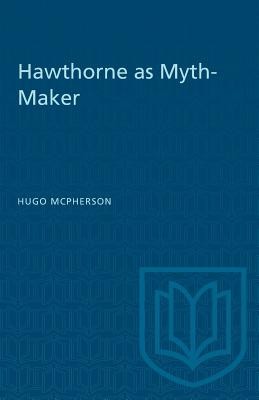
- We will send in 10–14 business days.
- Author: Hugo McPherson
- Publisher: University of Toronto Press
- Year: 1969
- Pages: 278
- ISBN-10: 1487581114
- ISBN-13: 9781487581114
- Format: 14 x 21.6 x 1.6 cm, minkšti viršeliai
- Language: English
- SAVE -10% with code: EXTRA
Reviews
Description
The private non-rational pattern, the personal myth of an artist 'is in fact ... the source of the coherence of his argument.' (Northrop Frye) The critic must recognize that myth, or fail to understand fully the artist's statement and method. This is the basic premise of Mr. McPherson's study. He formulates the idea that Hawthorne's work rises out of a personal mythology, a hidden life in which his deepest interests and conflicts are transformed into images and characters. As Hawthorne himself said: '[An author's] external habits, his abode, his casual associates and other matters entirely on the surface ... These things hide the man, instead of displaying him. You must make quite another kind of inquest, and look through the whole range of his fictitious characters, good and evil, in order to detect any of his essential traits.' -- Preface to The Snow Image.
Mr. McPherson largely ignores the externals to allow the character types, image patterns, and narrative configurations of Hawthorne's art to speak for themselves. He begins by reconstructing Hawthorne's personal legend as it is revealed in his writing and subsequent scholarship. He then turns to Hawthorne's idealized reinterpretations of Greek myth, and in part III he discusses the sombre tales of experience and Hawthorne's New England myth, and suggests that the so-called 'Gothic trappings' are essential parts of his statement. The author's research in this section produces surprising illuminations of many chapters and incidents that have long puzzled critics and readers.
The image of Hawthorne that emerges from this excellent study is a radical departure from current Freudian, Christian, and New Critical views of his work.
Hawthorne thought of himself as 'Oberon' (his college nickname). Mr. McPherson is the first critic who has entertained this idea seriously.
EXTRA 10 % discount with code: EXTRA
The promotion ends in 23d.13:03:44
The discount code is valid when purchasing from 10 €. Discounts do not stack.
- Author: Hugo McPherson
- Publisher: University of Toronto Press
- Year: 1969
- Pages: 278
- ISBN-10: 1487581114
- ISBN-13: 9781487581114
- Format: 14 x 21.6 x 1.6 cm, minkšti viršeliai
- Language: English English
The private non-rational pattern, the personal myth of an artist 'is in fact ... the source of the coherence of his argument.' (Northrop Frye) The critic must recognize that myth, or fail to understand fully the artist's statement and method. This is the basic premise of Mr. McPherson's study. He formulates the idea that Hawthorne's work rises out of a personal mythology, a hidden life in which his deepest interests and conflicts are transformed into images and characters. As Hawthorne himself said: '[An author's] external habits, his abode, his casual associates and other matters entirely on the surface ... These things hide the man, instead of displaying him. You must make quite another kind of inquest, and look through the whole range of his fictitious characters, good and evil, in order to detect any of his essential traits.' -- Preface to The Snow Image.
Mr. McPherson largely ignores the externals to allow the character types, image patterns, and narrative configurations of Hawthorne's art to speak for themselves. He begins by reconstructing Hawthorne's personal legend as it is revealed in his writing and subsequent scholarship. He then turns to Hawthorne's idealized reinterpretations of Greek myth, and in part III he discusses the sombre tales of experience and Hawthorne's New England myth, and suggests that the so-called 'Gothic trappings' are essential parts of his statement. The author's research in this section produces surprising illuminations of many chapters and incidents that have long puzzled critics and readers.
The image of Hawthorne that emerges from this excellent study is a radical departure from current Freudian, Christian, and New Critical views of his work.
Hawthorne thought of himself as 'Oberon' (his college nickname). Mr. McPherson is the first critic who has entertained this idea seriously.


Reviews